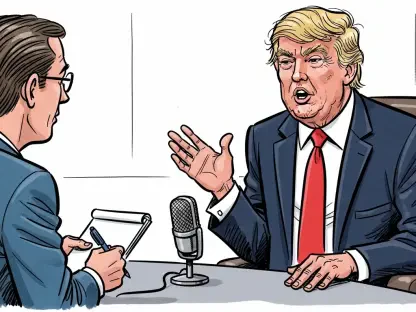Opening Gambit
A fast-ticking deadline, a fragile bipartisan window, and one clause about abortion coverage now threatened to upend a health deal the White House cast as essential to keeping premiums in check. With subsidies set to lapse at year’s end, budget staff warned that even a short delay could spike monthly costs for millions on the individual market.
That countdown created leverage and pressure in equal measure. Republicans demanded Hyde-style restrictions on any plan receiving federal help, while Democrats argued that importing those limits into private insurance would extend policy far beyond long-standing federal program rules.
Why It Matters Now
Subsidies held down premiums by softening annual rate hikes and preventing insurer exits. Middle-income families and near-retirees without employer coverage felt the impact most; a few hundred dollars more each month could push them off coverage entirely.
The fight over abortion coverage did not appear by accident. The Hyde framework has long barred direct federal funding for abortion, but applying it to subsidized private plans marked a major shift for some lawmakers, effectively reshaping benefits in marketplaces that rely on consumer choice.
Lines In The Sand
Republican offices framed the demand simply: if tax dollars touch a plan, Hyde protections should apply. Backed by anti-abortion groups, negotiators treated the clause as non-negotiable, signaling that any subsidy bill without it would stall.
Democrats countered that folding new limits into insurance markets would set precedent with broad spillover. They warned that once codified, restrictions could migrate into employer coverage or future health initiatives, creating a lever for policy fights beyond today’s debate.
Signals And Stakes
The administration’s strategic ambiguity aimed to keep both camps at the table. However, silence sharpened the spotlight. Senatespeak hinted at a math problem: overcoming a filibuster required Democratic votes, yet any explicit curbs risked losing them.
Health economists noted that subsidy certainty stabilized premiums, while insurers pointed to pricing deadlines and the risk of mid-year corrections. Patient advocates described confusion when benefits changed midstream, a churn that often discouraged preventive care and continuity with clinicians.
Paths Toward A Deal
Several routes circulated. A clean, time-limited extension with a separate vote on abortion riders could lower temperatures and avert premium shock. Another option kept current rules but required clear labeling so consumers could choose plans aligned with their views. A short sunset paired with an independent review promised data before durable law.
Negotiators floated technical fixes—tight language to prevent spillover into employer markets, a bipartisan drafting group to pre-clear text, and coordinated communications to help consumers navigate plan choices if new restrictions appeared.
What Comes Next
The immediate steps had been clear: move a clean extension before insurers locked rates, commit to a stand-alone debate on abortion riders, and bolster exchange outreach in case Congress slipped past the deadline. For consumers, the prudent move had been to watch state exchange notices, consult navigators, and confirm whether plan benefits might shift under any compromise.
If lawmakers had chosen clarity over brinkmanship, the deal could have restored predictability to premiums without predetermining abortion policy across the private market. The test had been whether urgency on affordability could coexist with restraint on culture-war clauses—and whether a narrow window could hold long enough to keep coverage stable.









